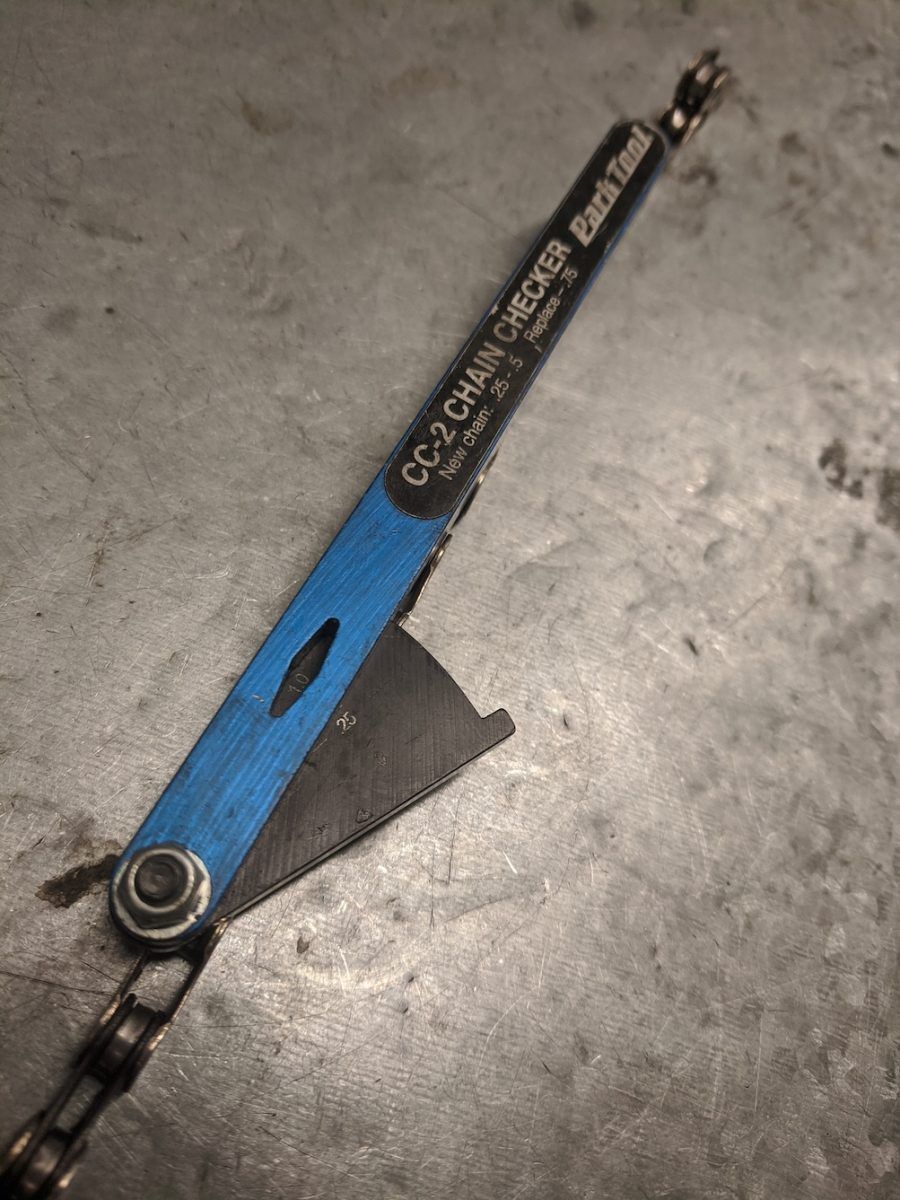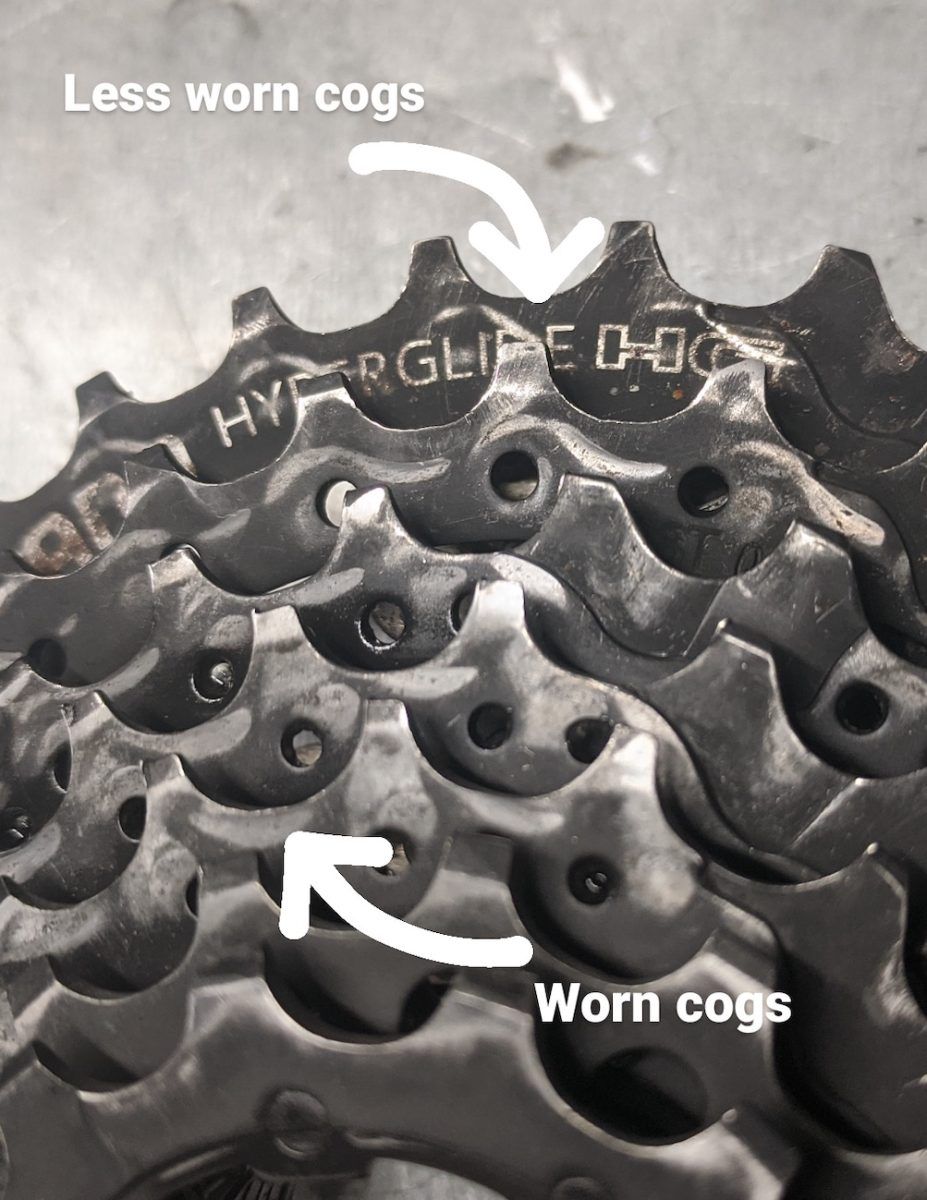Well here we’ll explain what we are measuring with that gauge and why your drivetrain needs replacing. The drivetrain is what most mechanics call the chain, cassette (the rear cogs) and chainrings (the front cogs).
The chain checker tool
The tool we drop into the chain is a chain checker, and it measures how worn a chain is. The tool itself is trying to push the links of the chain apart to check how worn the rollers are. Chain wear is usually expressed in a percentage, i.e 0.75% worn.

When a chain is 0.75% worn a new chain should mesh and shift well with the old cassette and chainrings on the bike, the chain wear is used to approximate wear on the cassette also (it can be hard to actually see or measure wear on cassettes until they are really worn out).
So why do you need to replace the chain and possibly cassette and chainrings?
As the rollers of your chain wear, they start wearing into the hollows between the teeth on the cassette and chainring, they also start wearing the teeth on them.
If a chain cassette is really worn – typically well past 1% on the gauge – the fit between the rollers on the chain and the hollows on the cassette is poor and there is a lot of slop between them. When you put some power down, say taking off at the lights or riding up a hill, the chain can jump off the cassette. This is horrible to ride and can be dangerous – think about it happening in the middle of an intersection or pushing hard up a hill out of the saddle!
The smaller cogs on a cassette wear out sooner than the larger cogs simply because there are more teeth to spread the wear across, 11 or 12 teeth vs 20+ teeth. The same goes for chainrings with 40+ teeth.

Over time the chain and cassette become a matched pair, like old friends that get each other’s jokes. If you change one and not the other the drivetrain can perform much worse than if they had been left as a pair! Hence why we mostly recommend changing the chain and cassette together, both being new means they will work well together.
You can just change the chain if the chain is not too worn ~0.5%, this is a good approach on higher end bikes where the cassettes can cost $150+.
While most manufacturers quote 4,000kms as an estimated life of a chain this varies based on how well the chain is cared for (wiped clean and lubed) and how the riders pedals – soft spinning or more powerful efforts.
If you’re having issues with your chain skipping or want us to check your chain for wear, drop into one of three shops: Melbourne CBD, Docklands and Geelong and we’ll check it out.